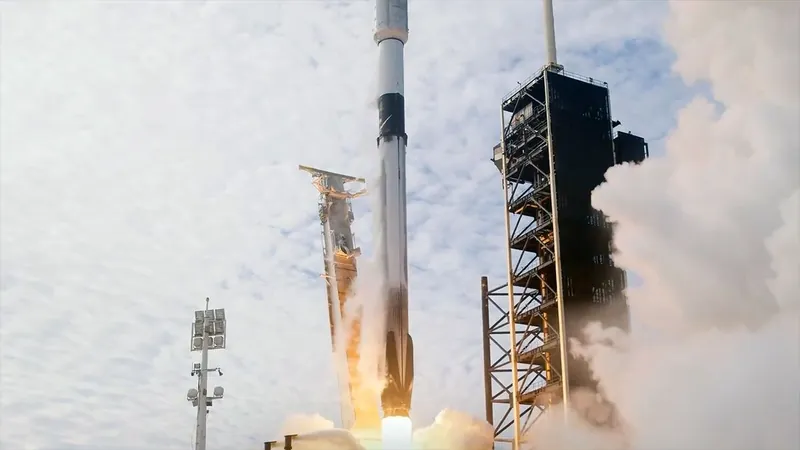
SpaceX Propels the Future of Internet: 21 New Starlink Satellites Launched from Florida
2025-01-08
Author: Ying
Launch Overview
In a spectacular display of innovation and engineering, SpaceX successfully launched 21 new Starlink satellites from Florida's Space Coast on January 8. The historic event took place at 10:27 a.m. EST (1527 GMT) when a Falcon 9 rocket soared into the sky from NASA's Kennedy Space Center.
Direct to Cell Capabilities
Among the impressive payload were 13 satellites equipped with Direct to Cell capabilities, promising to revolutionize internet connectivity by enabling direct communication between the satellites and mobile devices, potentially bringing high-speed internet to remote areas. This could drastically change the game for users in underserved regions who have traditionally struggled with accessibility.
Rocket Recovery
After a flawless launch, the Falcon 9's first stage made a triumphant return to Earth, landing on the drone ship named "A Shortfall of Gravitas," located in the Atlantic Ocean, around eight minutes post-liftoff. Remarkably, this was the third successful launch and landing for this particular booster, having previously completed missions, including one for the Starlink project, showcasing SpaceX's commitment to reusability and cost-effectiveness.
Deployment of Satellites
Once detached, the Falcon 9's upper stage took over, expertly maneuvering the Starlink satellites to low Earth orbit (LEO) with deployment scheduled about 65 minutes after the liftoff, marking yet another step in SpaceX's ambitious goal of expanding global internet access.
Looking Ahead
SpaceX's Starlink initiative has gained significant momentum, with thousands of satellites planned for deployment in the coming years. As the constellation grows, users worldwide can anticipate enhanced internet reliability and speed, as well as advancements in technology that may empower new generations to connect and thrive in an increasingly digital world.
Conclusion
Stay tuned as SpaceX continues to push boundaries and revolutionize the way we connect—one satellite at a time!


 Brasil (PT)
Brasil (PT)
 Canada (EN)
Canada (EN)
 Chile (ES)
Chile (ES)
 Česko (CS)
Česko (CS)
 대한민국 (KO)
대한민국 (KO)
 España (ES)
España (ES)
 France (FR)
France (FR)
 Hong Kong (EN)
Hong Kong (EN)
 Italia (IT)
Italia (IT)
 日本 (JA)
日本 (JA)
 Magyarország (HU)
Magyarország (HU)
 Norge (NO)
Norge (NO)
 Polska (PL)
Polska (PL)
 Schweiz (DE)
Schweiz (DE)
 Singapore (EN)
Singapore (EN)
 Sverige (SV)
Sverige (SV)
 Suomi (FI)
Suomi (FI)
 Türkiye (TR)
Türkiye (TR)
 الإمارات العربية المتحدة (AR)
الإمارات العربية المتحدة (AR)